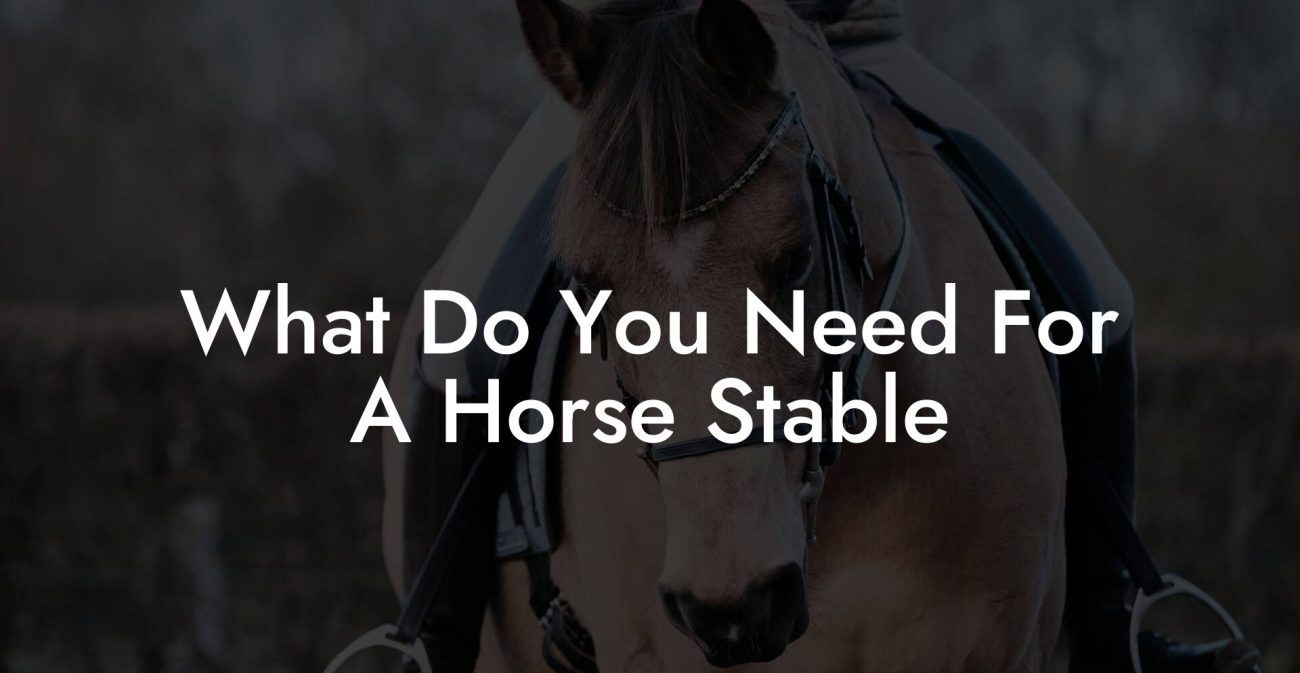There’s a wild balance between man and beast on the back of a horse, like a perfectly choreographed dance on four hooves, where every ounce counts. When you're gearing up for a trail ride or a jump-off with your equine best friend, one burning question tends to ride shotgun: "How heavy can a horse rider be?" This isn’t just idle chitchat at the barn; it’s the nitty-gritty of equestrian care, horse health, and making sure both you and your steed are in tip-top shape for your adventures.
Quick Links to Useful Sections
- The Weighty Question: How Much Rider Weight is Too Much?
- Breaking Down the Factors That Influence Rider Weight Limits
- 1. Horse Breed and Build
- 2. Saddle Fit and Equipment
- 3. Training and Conditioning
- 4. Rider Technique and Posture
- 5. Terrain and Activity Level
- The Science Behind the Numbers: How Much is 15-20% Anyway?
- Balancing Act: The Impact of Rider Weight on Horse Health and Performance
- Pressure on the Spine and Muscles
- Influence on Gait and Performance
- Long-Term Health Considerations
- Riding Gear, Saddle Fitting, and Weight Distribution: The Unsung Heroes
- Importance of a Well-Fitted Saddle
- Innovative Riding Gear and Technology
- Saddle Fitting: A Collaborative Process
- Rider Techniques: Mastering the Art of Light, Balanced Riding
- Core Strength and Posture
- Dynamic Balance and Flexibility
- Mindful Riding Practices
- High-Tech Meets Hay Bale: Smart Tools for Managing Weight and Performance
- Expert Opinions and Research: What the Pros Have to Say
- Caring for Your Equine Partner: Tips on Horse Management and Post-Ride Recovery
- Post-Ride Cool-Down and grooming
- nutrition and Hydration for Equine Recovery
- Regular Veterinary Check-Ups and Monitoring
- Resources and Community Support: Your Next Steps in Equestrian Mastery
- Frequently Asked Questions About Rider Weight Limits and Horse Care
- Riding Into the Future: Embracing a Holistic Lifestyle for Riders and Horses
The Weighty Question: How Much Rider Weight is Too Much?
Believe it or not, horses have their own idea of a weight limit, an invisible threshold that, if crossed, can cramp their style (and your ride). Researchers and equestrian experts generally recommend that a horse should comfortably carry no more than 15-20% of its body weight. That means if you have a 1,000-pound draft horse, there's a decent chance they could handle a rider weighing up to 150-200 pounds with proper equipment and conditioning. But remember, each horse is an individual superstar with its own size, breed, training, and conformation factors that come into play.
When we talk about "how heavy can a horse rider be," we're not just throwing numbers around. It’s about safety, performance, and the overall well-being of your equine partner. Exceeding the recommended weight limit can lead to discomfort, altered gait, and even long-term issues like joint strain or back problems for the horse.
From an SEO perspective, terms like "equestrian weight limits," "rider weight restrictions," and "horse health and rider safety" are critical for anyone who’s curious about this subject. As you explore further, you’ll learn that these numbers aren’t set in stone, they’re more like guidelines designed to ensure your horse can trot, canter, and gallop without any extra burdens.
Breaking Down the Factors That Influence Rider Weight Limits
When pondering the question, “How heavy can a horse rider be?” several factors come into play. It’s not just about a number on a scale but an intricate dance of biology, physics, and a touch of old-fashioned horse sense.
1. Horse Breed and Build
Just as every person is unique, every horse is built differently. Draft horses with solid, muscular builds can typically handle a higher percentage of body weight as riders, whereas delicate riding horses, such as Arabians or Thoroughbreds, might struggle if pushed past their comfortable threshold. The genetic makeup of the horse, its bone density, and muscle tone all influence its weight-bearing capacity. Equestrian enthusiasts often exchange tips about which breeds are known for being robust “workhorses” and which are more suited for light, elegant riding.
2. Saddle Fit and Equipment
Even if Mr. or Ms. Rider is within that ideal weight range, improper saddle fit and poor-quality equipment can drastically alter how weight is distributed across the horse’s back. A well-fitted saddle plays a vital role in weight distribution and overall comfort, reducing the risk of pressure points that could harm the horse’s spine and muscles. The use of padded girths, proper stirrup lengths, and high-quality saddle cloths can help ensure weight is shared in a balanced manner.
3. Training and Conditioning
A horse that's been conditioned for riding is like a finely tuned sports car, with each exercise, it becomes more efficient and better able to handle varying rider weights. Training routines that include core strengthening, balance exercises, and flexibility drills are essential in preparing your horse for the dynamic pressures of riding. Horses that have not been properly conditioned might feel extra strain even if the absolute weight isn’t excessive.
4. Rider Technique and Posture
It isn't just your weight that matters, it’s how you sit on that saddle. Good posture, effective balance, and a light, centered seat can distribute your weight more evenly. Conversely, a sloppy riding technique can concentrate weight in one area, causing uncomfortable pressure on the horse’s back, even if the rider's weight is within the recommended range. Proper riding technique is about engaging your core muscles, aligning your spine, and using your legs as shock absorbers.
5. Terrain and Activity Level
Are you gearing up for a leisurely trail ride or a full-throttle competition? The type of riding dramatically impacts what weight a horse can comfortably carry. Rough terrain and high-intensity activities require more of the horse’s energy and strength, meaning even a slight excess in rider weight could tip the scales from fun to fatigue. The interplay between activity level and weight load can affect everything from the horse’s stride to its long-term joint health.
The Science Behind the Numbers: How Much is 15-20% Anyway?
Let’s get a bit scientific: when experts talk about a horse carrying 15-20% of its body weight, think of it as ensuring that every pound of weight is optimally balanced over the horse’s center of gravity. For example, for a 1,000-pound horse, that’s roughly 150 to 200 pounds, including the rider, saddle, and any additional gear. This percentage is derived based on a combination of veterinary research, biomechanics, and practical observations over decades.
It’s important to note that while these percentages offer a useful guideline, they aren’t one-size-fits-all. Local terrain, riding style, and the individual horse’s anatomy can all play into what is truly comfortable. Some horses might happily carry slightly more, while others might need to stick to the lower end of the scale. Weight is just one part of the equation, think of it like the Wi-Fi signal of your equestrian lifestyle: the quality and stability can be just as important as the speed.
For Gen-Z and millennial riders who often multitask between office work, digital hobbies, and weekend rodeos, staying informed on these numbers is part of the modern ride. Understanding the science behind weight limits can empower you to make smarter choices when selecting a horse, investing in saddle fit, and planning your riding routines to achieve that perfect balance.
Balancing Act: The Impact of Rider Weight on Horse Health and Performance
When you ask, “How heavy can a horse rider be?” the answer isn’t confined to just numbers on a scale. It's also about the rippling impacts on a horse's anatomy and performance. Let’s break down how rider weight affects your horse:
Pressure on the Spine and Muscles
Think of your horse's back as a finely tuned instrument. Excessive weight can create pressure points, leading to muscle strain, spinal misalignment, and even soft tissue injuries. Over time, these issues can reduce the horse’s agility and lead to chronic pain, nobody wants a grumpy, sore steed!
Influence on Gait and Performance
When a horse carries too much weight in an uneven manner, its natural gait can be altered. This misalignment may lead to a less efficient stride, affect performance in competitions, and can even contribute to lameness. A balanced weight load encourages a smooth, rhythmic motion, which not only keeps your horse happy but also boosts overall performance whether you’re competing or enjoying a scenic ride.
Long-Term Health Considerations
Just as we worry about back pain after a long day at the computer, horses can suffer long-term damage from carrying too much weight over prolonged periods. Chronic overloading can lead to arthritis, ligament damage, and other musculoskeletal issues. Adopting a proactive approach to managing rider weight isn’t merely about short-term comfort, it’s about preserving your horse’s health for years to come.
In this context, proper weight management is the cornerstone of a sustainable riding relationship. It’s about ensuring that your loyal partner isn’t overworked and that every ride contributes positively to its overall well-being.
Riding Gear, Saddle Fitting, and Weight Distribution: The Unsung Heroes
Picture this: You’re dressed in your trendy riding gear, confidence oozing from your perfectly styled mane (or freshly washed hair), and you’re about to hit the arena. But wait, the secret to a stress-free ride might just lie in your saddle. The right gear and proper saddle fitting are unsung heroes in the story of rider weight management.
Importance of a Well-Fitted Saddle
A saddle that fits well is like a custom-tailored suit, it makes all the difference. When a saddle is too narrow, too wide, or not adjusted properly, it can concentrate weight in uncomfortable spots along the horse’s back. Modern equestrian gear designers understand the importance of balanced load distribution, and many now offer customizable and ergonomically designed saddles that adapt to both the horse’s and the rider’s body.
Innovative Riding Gear and Technology
In the digital age, technology has galloped into the world of equestrian equipment. From pressure-sensitive pads that monitor load distribution in real time to smart saddles that adjust to subtle shifts in weight, innovations are making riding safer and more comfortable. These advancements not only help in maintaining proper weight balance but also give drivers, oops, riders, insight into the way their weight interacts with the horse’s back, allowing for continuous adjustments and improvements.
Saddle Fitting: A Collaborative Process
Getting your saddle fitted isn’t a one-and-done affair; it’s a dynamic process that involves collaboration between you, a knowledgeable saddle fitter, and, of course, your horse. Professionals take into account the horse’s conformation, muscle structure, and even its temperament, ensuring that the saddle not only fits perfectly but also moves harmoniously with the animal’s natural gait. This careful process ensures that the weight is distributed in a way that promotes both comfort and peak performance.
Rider Techniques: Mastering the Art of Light, Balanced Riding
Let’s face it: even if all other factors are perfect, an unbalanced rider can upset the equilibrium. That’s why developing a refined riding technique is crucial, not just for your own agility and style, but for the long-term health of your horse. A rider who maintains a centered, light seat and utilizes proper balance can effectively minimize the impact of their weight.
Core Strength and Posture
Like a modern-day circus performer or an Instagram fitness guru, riding with strength in your core makes all the difference. A strong core not only supports your spine but also helps distribute your weight evenly. Pilates, yoga, and specific core exercises are popular among riders striving for that perfect posture that translates into a more enjoyable and sustainable ride.
Dynamic Balance and Flexibility
Riding is an active, dynamic process. It’s about adapting to the horse’s every move, whether you’re taking a hairpin turn or galloping down a trail. Training that improves your dynamic balance, like balance board exercises or even certain dance routines, can have a surprisingly positive impact on your riding technique. Flexibility in your hips and legs allows you to move seamlessly with your horse, ensuring your weight is always in the right place at the right time.
Mindful Riding Practices
For the digitally savvy, adapting mindfulness into your riding regimen might sound a bit out there, but it’s more practical than it seems. Being fully present on your ride not only deepens the connection with your horse but also helps you recognize and adjust even the subtlest shifts in your weight distribution. This kind of riding, marked by mindfulness and conscious movement, can transform your experience from a mere physical activity to a soulful, harmonious engagement with your magnificent steed.
High-Tech Meets Hay Bale: Smart Tools for Managing Weight and Performance
In a world where smartphones track our steps, why shouldn’t your saddle do the same? Modern riding equipment increasingly integrates technology that helps monitor rider weight in real-time. Utilizing pressure-mapping sensors, smart saddles, and even wearable devices, riders are now equipped with data that provides insights into how weight is distributed while riding.
These smart tools do more than just satisfy your inner tech-geek, they offer actionable feedback. If your device detects excessive pressure in a small area or shifts in weight distribution during a gallop, you can adjust your seating or saddle position on the fly. This data-driven approach means that every ride becomes not only a fun experience but also an opportunity to gather insights about how to continuously improve both your riding technique and your equine partner’s comfort.
In the realm of equestrian care, this melding of technology and tradition is fast becoming the norm. Riders who blend the digital with the classical learn to optimize their practices, ensuring that questions like “how heavy can a horse rider be?” are answered not just by numbers on a chart, but by the lived, tangible experience of balanced and joyful riding.
Expert Opinions and Research: What the Pros Have to Say
It helps to know that you’re not the first to wonder about these weight-related musings. Veterinarians, saddle fitters, and professional riders all agree: maintaining an optimal rider-to-horse weight ratio is key to longevity in the equestrian world. Studies across equine biomechanics highlight that when horses are kept within their ideal load thresholds, they experience less musculoskeletal strain, improved stamina, and a more even gait.
Experts routinely emphasize that rider weight is just one factor in a complex equation that includes saddle fit, rider posture, and overall equine conditioning. This is why many professional training programs and workshops incorporate sessions on rider balance and the importance of maintaining that 15-20% guideline. Equestrian influencers on social media echo these sentiments, often sharing personal stories and data-backed insights that demystify the entire process.
Whether you’re a seasoned professional or a weekend warrior, listening to expert opinions and staying current with the latest research can arm you with the knowledge to make informed decisions about rider weight limits, saddle technology, and training programs, all the while reinforcing the shared goal of enhancing both rider and horse performance.
Caring for Your Equine Partner: Tips on Horse Management and Post-Ride Recovery
Beyond ensuring that weight limits are respected during a ride, practicing comprehensive equine care remains essential for maintaining long-term horse health. After a strenuous ride, how you care for your horse can make an enormous difference in its recovery, performance, and overall spirit.
Post-Ride Cool-Down and grooming
Think of the post-ride cool-down as the horse equivalent of a spa day. Allow your horse time to gradually lower its heart rate with a gentle walk and light stretching. Follow this up with a thorough grooming session that not only cleans away sweat and dirt, but also stimulates circulation and eases muscle tension. For many riders, this quiet time is the perfect moment for bonding, ensuring that their steed feels cherished and cared for every time.
nutrition and Hydration for Equine Recovery
Just as you fuel up with a balanced meal and water before a long day, your horse needs the right nutrients post-ride. High-quality hay, fresh water, and specialized supplements that bolster joint health and muscle recovery can provide the necessary support after a heavy ride. Nutrition experts in equine care emphasize that proper feeding routines, tailored to the intensity of the activity, are crucial for preventing injuries and ensuring a speedy recovery.
Regular Veterinary Check-Ups and Monitoring
A routine veterinary check-up isn’t just about vaccines and hoof trimming, it’s a vital part of keeping tabs on your horse’s overall well-being. Regular examinations help detect early signs of discomfort or overload, making it easier to intervene before minor issues evolve into major problems. The integration of innovative wearable monitors for horses is becoming increasingly popular, allowing vets to remotely track metrics like heart rate, respiration, and recovery times.
For riders probing into “how heavy can a horse rider be?”, understanding that post-ride recovery and proactive equine care safeguard your horse’s longevity is key. These practices ensure that each ride, regardless of intensity, contributes positively to the overall health and performance of your loyal partner.
Resources and Community Support: Your Next Steps in Equestrian Mastery
The equestrian community is a vibrant ecosystem of enthusiasts who learn from each other, share best practices, and support one another on this journey of balanced riding and optimal horse care. If you’re looking to dive deeper into topics like rider weight management, saddle fitting innovations, or holistic equine care, a wealth of resources awaits you.
Online forums, specialized blogs, and regional equestrian clubs are teeming with real-life stories, expert advice, and practical tips on how to maintain the delicate equilibrium between rider and horse. Participating in these communities not only enhances your riding prowess but also expands your understanding of how modern technology and traditional practices can intersect for better horse health.
Consider signing up for webinars hosted by equine professionals, subscribing to newsletters from renowned riding academies, or simply engaging in discussions on social media platforms dedicated to horse care. Whether you’re analyzing detailed biomechanics or swapping lighthearted riding mishaps, connecting with fellow riders can lead to lifelong friendships and a treasure trove of insider tips.
Your next step in equestrian mastery is to stay informed, remain curious, and actively contribute to the continually evolving narrative of horse care. By doing so, you not only champion your own riding success but also serve as an ambassador for the health and happiness of every horse you encounter.
Frequently Asked Questions About Rider Weight Limits and Horse Care
Here are some of the most commonly asked questions that shed light on the multifaceted subject of "How Heavy Can A Horse Rider Be?" and offer insights into balanced equestrian care:
1. What is the general rule for the maximum percentage of a horse’s body weight that can be carried by a rider?
Most experts recommend that a horse can safely carry around 15-20% of its body weight. This figure includes the weight of the rider, saddle, and any additional gear.
2. Do breed and build have a significant impact on a horse’s weight-bearing capacity?
Absolutely. Larger, sturdier breeds like draft horses are typically more capable of handling heavier riders compared to lighter, more delicate breeds such as Arabians or Thoroughbreds.
3. Can a poorly fitted saddle affect how much weight a horse can comfortably carry?
Yes, a saddle that doesn’t fit correctly can lead to uneven weight distribution, causing pressure points and discomfort. It’s essential to invest in proper, ergonomic riding equipment.
4. How do rider technique and posture impact the overall weight distribution on a horse?
Good riding technique, maintaining a centered seat and engaging your core, helps distribute your weight evenly over the horse’s back, reducing the strain even if you’re near the upper end of the recommended weight range.
5. Does the terrain or the type of riding activity affect the suitable rider weight limit?
Yes, riding on rough terrain or engaging in high-intensity activities can place extra stress on the horse, meaning even small amounts of additional weight may have a bigger impact.
6. What role does post-ride care play in the overall health of a horse carrying a heavier rider?
Thorough post-ride care, including cooling down, proper grooming, and appropriate nutrition, is vital in helping your horse recover and preventing long-term injuries.
7. Is it possible to improve a horse’s conditioning to better handle higher rider weight?
With a well-structured training program that includes strength, balance, and flexibility exercises, a horse’s capacity to carry weight can indeed be improved over time.
8. How can technology enhance the process of monitoring weight distribution in equestrian sports?
Modern tools like smart saddles equipped with pressure sensors and wearable monitoring devices offer real-time feedback on weight distribution, allowing riders to adjust their posture and technique during rides.
9. What should a rider do if their horse shows signs of discomfort or strain after riding?
If you notice signs of discomfort such as altered gait, stiffness, or behavioral changes, it’s advisable to consult a veterinarian or an equine professional for a proper assessment.
10. Are there community-driven resources to help riders better understand and manage these issues?
Many online forums, equestrian blogs, and local clubs offer resources and shared experiences that help riders understand the nuances of weight management and saddle fitting in equine care.
Riding Into the Future: Embracing a Holistic Lifestyle for Riders and Horses
In the end, understanding “How Heavy Can A Horse Rider Be?” is part science, part art, and wholly an essential aspect of responsible equestrian care. Balancing rider weight isn’t solely about numbers but about creating a harmonious relationship with your horse, a mutual commitment to health, performance, and the thrill of the ride.
As you set out on your journey, remember that each ride is a dynamic experience where weaponized technology, expert advice, and age-old riding traditions converge to ensure both you and your horse flourish. Whether you’re perfecting your posture, investing in the latest smart saddle technology, or engaging with a supportive equestrian community, every step counts towards a smoother, safer, and more exhilarating ride.
The modern rider knows that innovation doesn’t have to come at the expense of tradition. Instead, it’s about merging the best of both worlds, a harmonious blend of digital insights, scientific research, and the time-honored wisdom of the stables. With the right tools, techniques, and community support, you can ensure that you’re not only riding within safe weight limits but also enhancing your horse’s overall quality of life.
So, saddle up with confidence, honor the majestic creature that carries you through life’s adventure, and remember that every ride is a step towards a healthier, happier equestrian lifestyle. Embrace the weighty questions, absorb the expert tips, and let your passion for riding guide you into a future of balance, innovation, and enduring horse care.
Your equestrian journey is as much about caring for your horse as it is about discovering your personal best. Every mindful adjustment, every informed decision about rider weight and saddle fit, contributes to a legacy of trust and mutual well-being. Here’s to many more rides filled with joy, balance, and the unmistakable bond between rider and horse.













